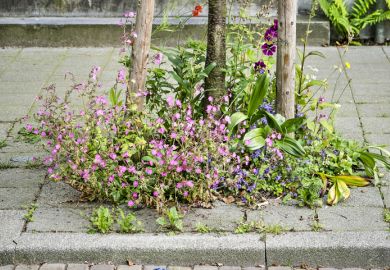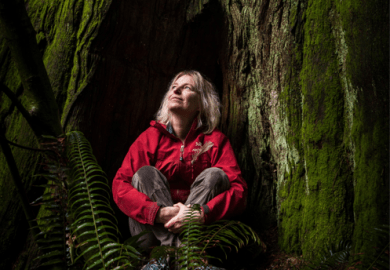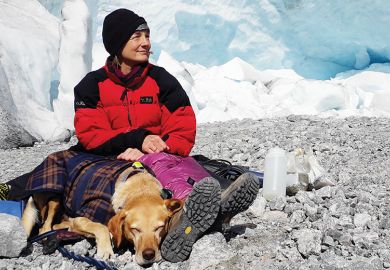Roger Musson ponders efforts to convert quake disasters into mere nuisances.
Three days before Christmas last year, a moderate-sized earthquake struck the town of San Simeon, California. There was some damage, and two people were killed. Four days later, on Boxing Day, another earthquake occurred, much the same in terms of size, but in another part of the world and with dramatically different consequences. The epicentre was close to the town of Bam, in southeast Iran. In seconds, most of the houses in Bam and the nearby villages were turned into piles of brick fragments and suffocating dust. It was night; most people were indoors asleep. Anyone who was buried under that dust had little chance of survival. Altogether, about 43,000 people perished, although in disasters such as this one the true death toll can never be precisely known.
The contrast between these two earthquakes was not lost on journalists I spoke to after the Bam earthquake. One could hardly look for a clearer illustration of the fact that, although earthquakes may be a natural phenomenon, earthquake disasters also have a human cause. In an earthquake-prone area, the quality of the local building stock makes all the difference between an earthquake that is merely a nuisance and one that is a catastrophe. Yet it is equally clear that one cannot export Californian solutions to Iran unless you can also export the Californian economy.
In particular, all around the world, local housing usually reflects the local availability of raw materials. In California, timber is relatively plentiful. Timber makes strong, flexible houses that stand up very well to earthquake shaking. In southeast Iran, timber is hardly to be found, and houses are usually made of mud brick. Such houses are fragile, stiff and prone to complete collapse after even moderate shaking. If a Californian timber house is shaken severely, it may be thrown off its foundations, but it retains most of its structural integrity and the occupants are likely to survive. When a mud-brick house collapses, if the occupants are not crushed to death they are likely be suffocated by the dust from disintegrating brick.
Finding strategies to reduce earthquake losses that can be implemented not just in rich nations such as the US and Japan, but also in poor countries such as Iran, is one of the key issues facing those charged with making the world a safer place from natural hazards. The 1990s were designated the International Decade of Natural Disaster Reduction, and, while it produced valuable initiatives, when its conclusion was bracketed by the devastating earthquakes of Izmit (1999) and Gujarat (2001), a number of voices could be heard questioning how much natural disasters really had been reduced. What now is the way forward? Any solution has to involve not just scientists, but also planners, politicians, regulators and so on.
Living on an Active Earth: Perspectives on Earthquake Science is intended as a contribution to this process, and is described throughout as a report rather than a book. As stated in the preface, it was compiled with funding from the National Academies to "assess the current scientific understanding of earthquake processes... prepare a comprehensive summary of the multidisciplinary research throughout the earth and physical sciences on the origins, properties and consequences of earthquakes, assess the research goals for the field of earthquake science, particularly as they support engineering and policy efforts to improve seismic mitigation strategies".
This is a book written by a committee. Fifteen members are listed, most of whom are academics, with two people from the US Geological Survey and one from a private company. The committee includes some extremely well-known and senior seismologists from the top of the profession. What they have done is to combine their expertise in various branches of seismology to provide a snapshot of the state of the art in 2003. In common with any academic subject, the discipline of seismology has grown to such an extent that no one can be fully informed about every branch of research. Hence the combined knowledge of the authorial team delivers a comprehensive review.
The downside is that a huge amount of information is compressed into 400-odd pages, including a startling volume of endnotes to each chapter - 23 pages with the second chapter, stuffed with facts as well as the usual bibliographical information. This chapter comprises a whistlestop tour of the historical development of seismology, starting with King Herod (not someone usually associated with earthquakes) and ending with recent developments in building codes and hazard maps.
There is a strong emphasis throughout on the major gaps in knowledge and on where research effort needs to be directed if significant progress is to be made. Some of the items on the authors' wish list are ambitious. I detect few omissions; the most significant is the absence of any mention of recent developments in the study of historical earthquakes, important for establishing what strength of earthquake has already affected settled areas in the past few hundred years.
Inevitably, the effect of compressing so much information into a single volume is to diminish readability. For anyone professionally involved in seismology, this book is to be recommended as a top-rank synopsis of the state-of-the-art of practically the whole discipline as it stands at the start of the new century. The emphasis on major problems still outstanding will be particularly valuable for anyone looking for ideas for research topics.
For anyone else, it will be an uphill struggle. While the book sets an agenda for research directed at improving the ways in which seismology can assist policy efforts for earthquake risk mitigation, policy-makers will not find it easy to read or absorb. Bridging the gap between scientific knowledge and making a real human difference when lives are at stake in earthquake disasters is a task that is proving elusive. This book does not build a bridge over that gap, but it lays out some useful blueprints.
Roger Musson is a seismologist at the British Geological Survey.
Living on an Active Earth: Perspectives on Earthquake Science
Author - The Committee on the Science of Earthquakes, National Research Council
Publisher - National Academies Press
Pages - 418
Price - £35.95
ISBN - 0 309 06562 3
Register to continue
Why register?
- Registration is free and only takes a moment
- Once registered, you can read 3 articles a month
- Sign up for our newsletter
Subscribe
Or subscribe for unlimited access to:
- Unlimited access to news, views, insights & reviews
- Digital editions
- Digital access to THE’s university and college rankings analysis
Already registered or a current subscriber?



